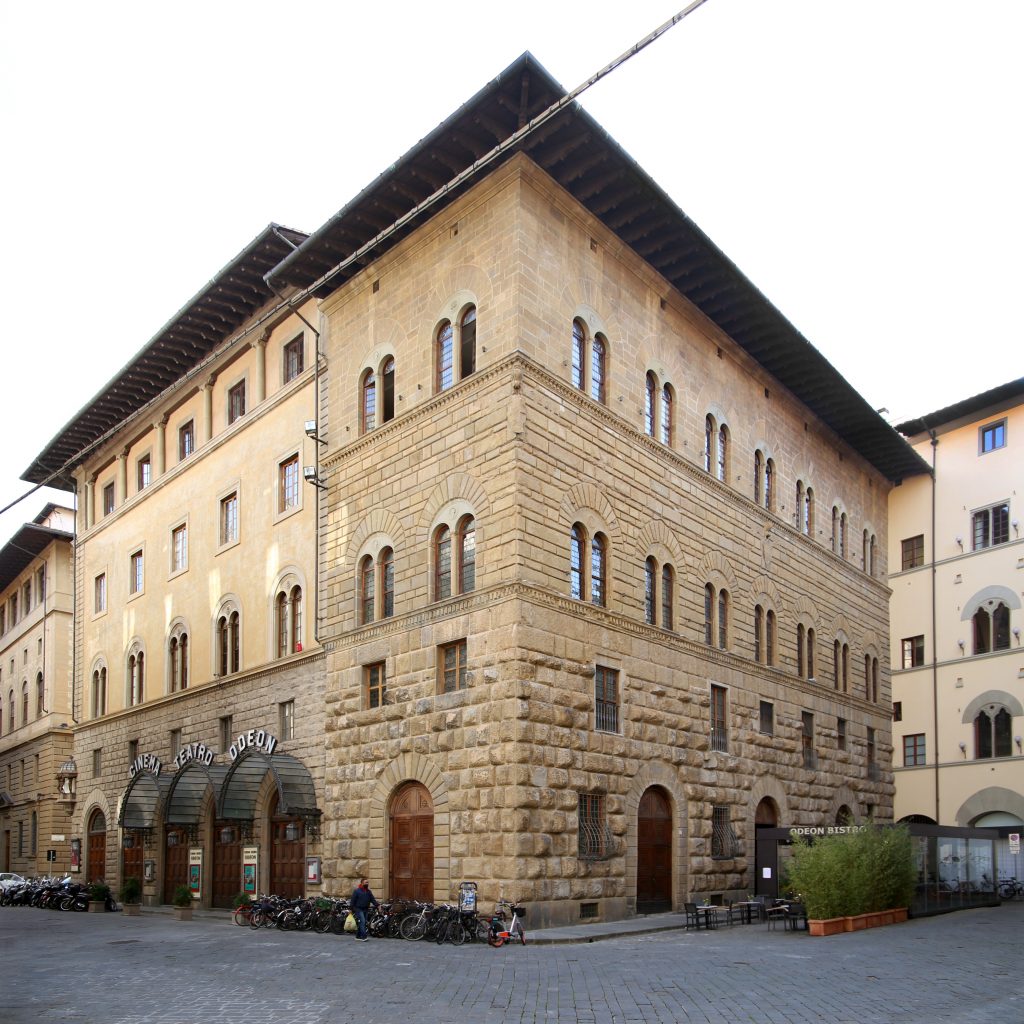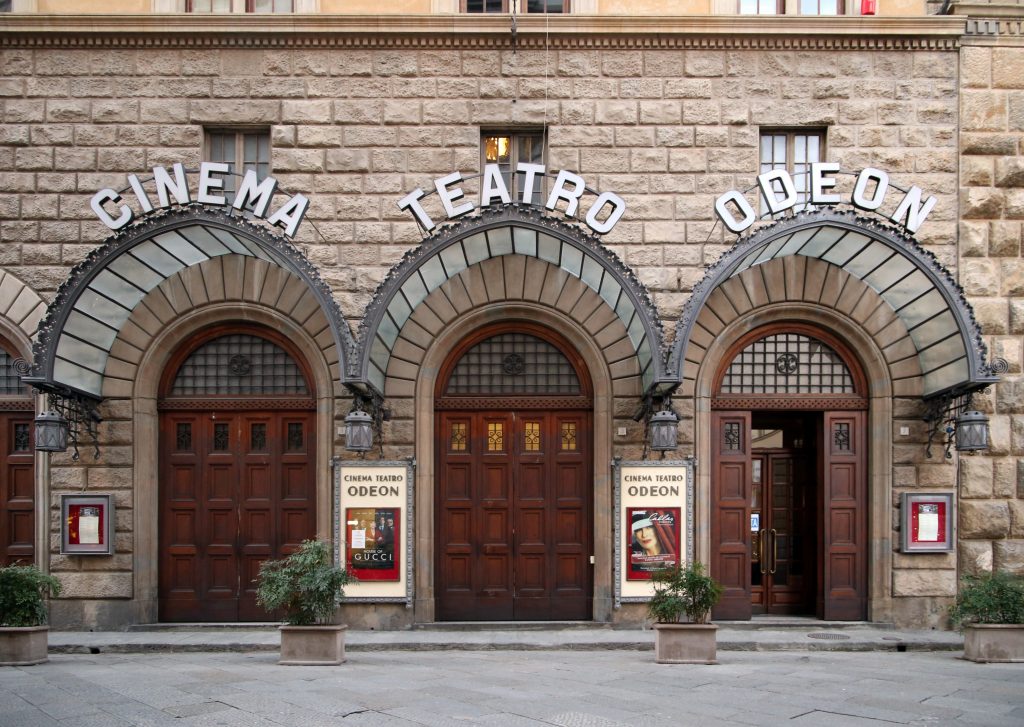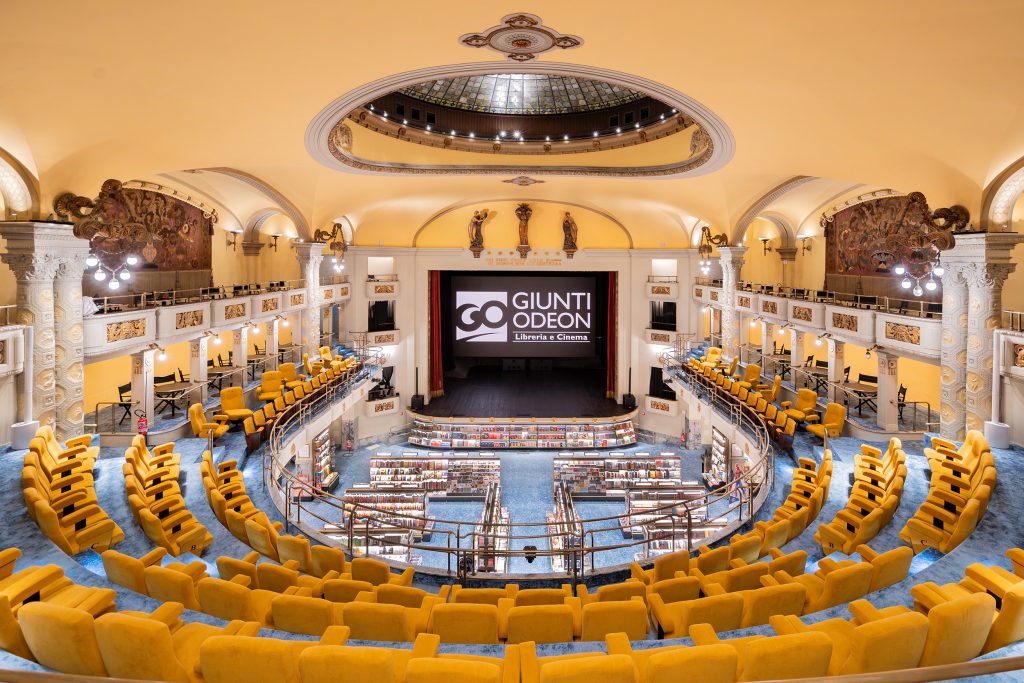On November 4 this year, the new Giunti Odeon opened its doors in the centre of Florence. What had previously been the Odeon Cinema, which specialized in showing original-language movies, most frequently in English, as well as being a familiar meeting place for the local ex-pat community and visiting tourists, is still a cinema, but now only for evening screenings, in addition to being a bookshop and a cultural hub for literary and artistic events.

Flanked by piazza Strozzi, via degli Anselmi, via de’ Sassetti and piazza dei Davanzati, the Giunti Odeon is housed in the Tre Porte (Three Doors) Palace, which for locals is more commonly and ironically nicknamed the Strozzino (Small Strozzi) Palace. This is because of its relationship with a minor branch of the powerful and wealthy Florentine family who built and owned it for over 400 years. In the 15th century, there were so many offshoots of the Strozzi family that it is estimated that they owned about 50 houses near the Santa Maria degli Ughi church, which no longer exists. According to some experts, building began on the palace somewhere between 1425 and 1434. It was believed to have been completed in 1457, although recent research dates completion as being earlier. Thought to have been designed originally by Brunelleschi, the facade reveals that two different architects were employed to do the job. The Florentine architect and sculptor Michelozzo di Bartolomeo (1396-1472) worked on the ground floor, while the architect, sculptor and military engineer Giuliano da Maiano (1432-90) was commissioned to style the first floor and inner courtyard, although he did not finish it. The palace complex, with its additional small houses, originally vaunted 121 rooms and took up the entire city block.

In 1888, when the historic centre underwent redevelopment, part of the palace was knocked down to allow via degli Anselmi to be widened and a portion of the rear was demolished to open up a new section of via de’ Sassetti. Further demolition took place, so that piazza dei Davanzati could be created. In 1901, the Directorate General of Antiquities and Fine Arts declared the Tre Porte Palace as part of Italian national heritage. On the advice of the great actress Eleonora Duse, the building was again modified in 1914, this time more radically, when the Florentine architect Adolfo Coppedè (1871-1951) was hired to transform the interior into a cinema-theatre, called the Savoia. Although World War I delayed progress on this new project, by the 1920s the new owners, the Sindacato Immobiliare Toscano, resumed the conversion. Rome-born Marcello Piacentini (1881-1960), who would later become one of Italy’s most prominent architects during the Fascist era, with his Pisan colleague Ghino Venturi (1884-1970), added 15th-century-style facades to three sides of the edifice and a third floor was added between 1920 and 1922. In 1927, in order to make sufficient room for the cinema, the beautiful internal Renaissance courtyard created between 1451 and 1469 had to be sacrificed. The lantern on the external wall on the corner of the palace is shaped like a small temple topped by the Florentine lily and held up by six nude plaster ephebes, although it was painted to resemble bronze; it was sculpted by Bernardo Marescalchi in 1929. Further restoration was carried out in 1938 and 1951, as well as in 1968, where repairs were necessary after the damage caused by the 1966 flood. Between 2008 and 2016, the Odeon Cinema became the site for the city’s most important film festival, 50 Days of Cinema in Florence.

This latest refurbishment has brought back to life many of the features that made the Strozzino Palace one of the most significant examples of Art Deco architecture in Florence, which makes it well worth a visit. These include sculptures by the author Dacia Maraini’s grandfather, Antonio Maraini (1886-1963), the fountains, the decorations on the columns, the grand coloured glass dome with its electric opening and closing mechanism by Francesco Mossmeyer (1899-1967), and tapestries by the architect’s wife, Matilde Festa Piacentini (1890-1957), which have been placed in their original setting and lit to showcase their intricate beauty.







